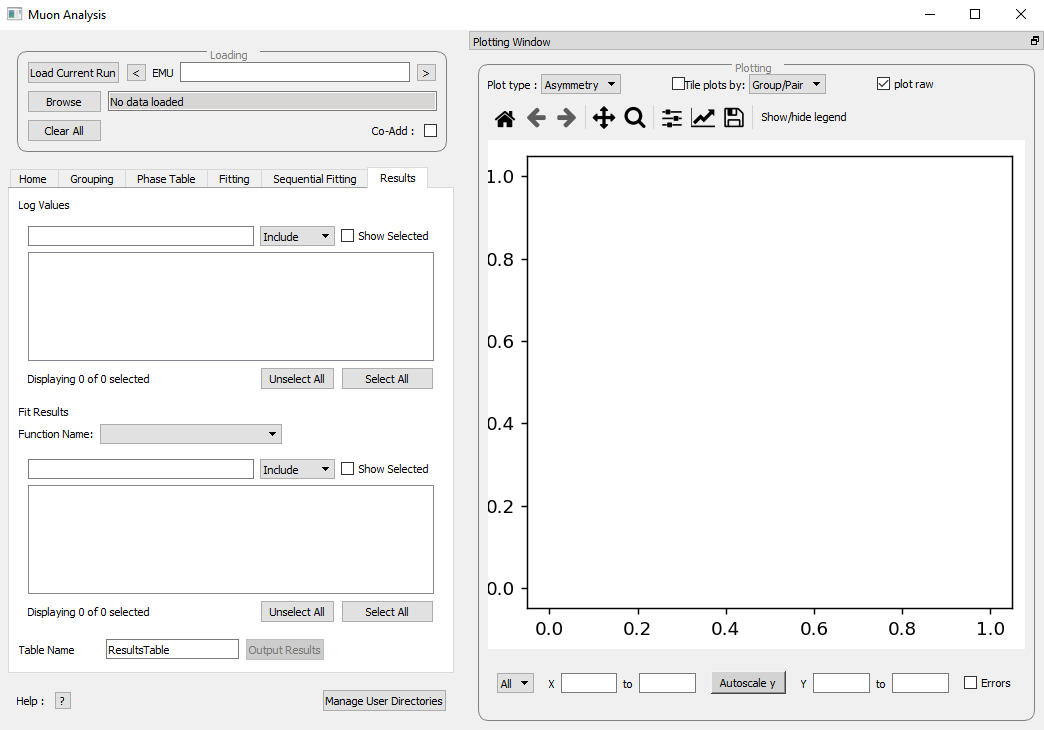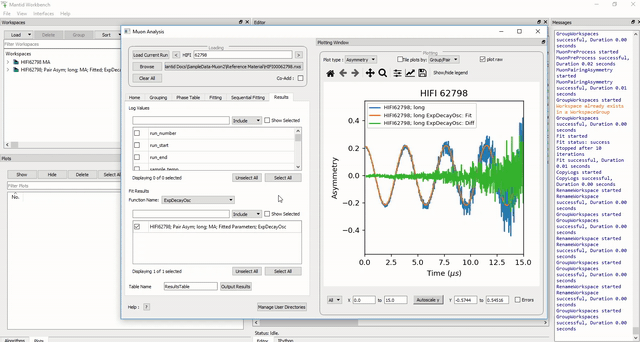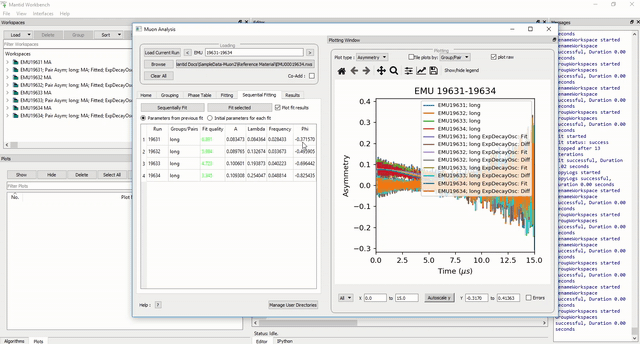\(\renewcommand\AA{\unicode{x212B}}\)
Table of Contents
The Results tab allows the user to:

Figure 32: The Results tab options.
The user has chosen to create a results table. When the ‘Output Results’ button is clicked, the resulting table will appear in the ADS. From here the data can be explored and plotted as one would with any data in a Mantid workspace. The data contained in a results table is determined by the contents of the Values and Fitting Results sections (in the example above these are empty; no data has been fitted, so there are no workspaces available for the Fitting Results section).
In the Values sections, the user can choose which Log Values to include in the results table, these values are data from the instrument such as run number, sample temperature etc. and are taken from the workspaces in the Fitting Results section.
NB even if a workspace from the Fit Result table has not been selected (via the checkbox), the types of Log Value it contains will still be present in the Values table. This does not mean they will be included in a produced results table.
The Fit Results section allows the user to choose which workspaces to use Log Values from - these can be either individual fits, or a sequential/simultaneous fits. The first option in this section is the Function Name drop-down menu, selecting a certain function in this menu will show all the workspaces that have had this function fitted to them in the table below. By default, checking the box next to a workspace in this table means its Log Values will be present in the results table. This can be changed with the Include/Exclude option (if Exclude is selected from the drop-down menu, checked workspaces will be the only ones not included in the table). The view can also be customised to only show selected workspaces.
As an exercise, follow the instructions below in order to produce a results table for a single individual or sequential fit.

Figure 33: How to create a results table from a single individual fit.

Figure 34: How to create a results table from a sequential fit.
Once a results table has been created, there are now different sets of parameters available for individual analysis. In Mantid, it is possible to plot different parameters against each other, to see the relationship between the two.
Follow the instructions below in order to plot a graph from parameters in a Results Table.
NB If data is not automatically assigned to the desired axes this can be changed manually. As an example, if in step 2. `Temp_Sample` was not already assigned to X, it could be right clicked after selection and then `Set as X`. This process is shown in 35. There are also other options such as to assign data to the `Y` axis, or `Y error`.

Figure 35: How to plot a graph from two parameters of a results table.
For more details on the Results Table tab, see the corresponding section of Muon Analysis